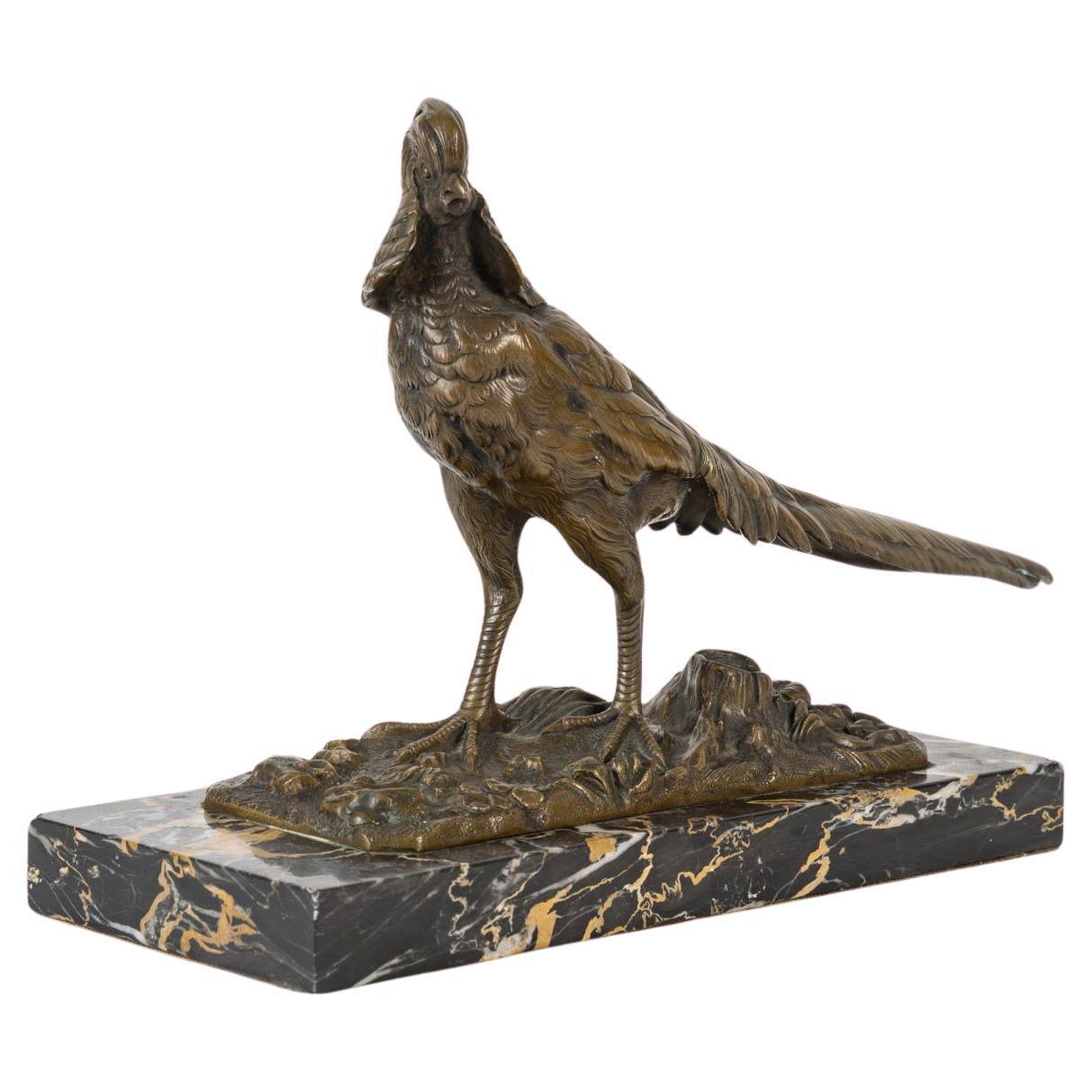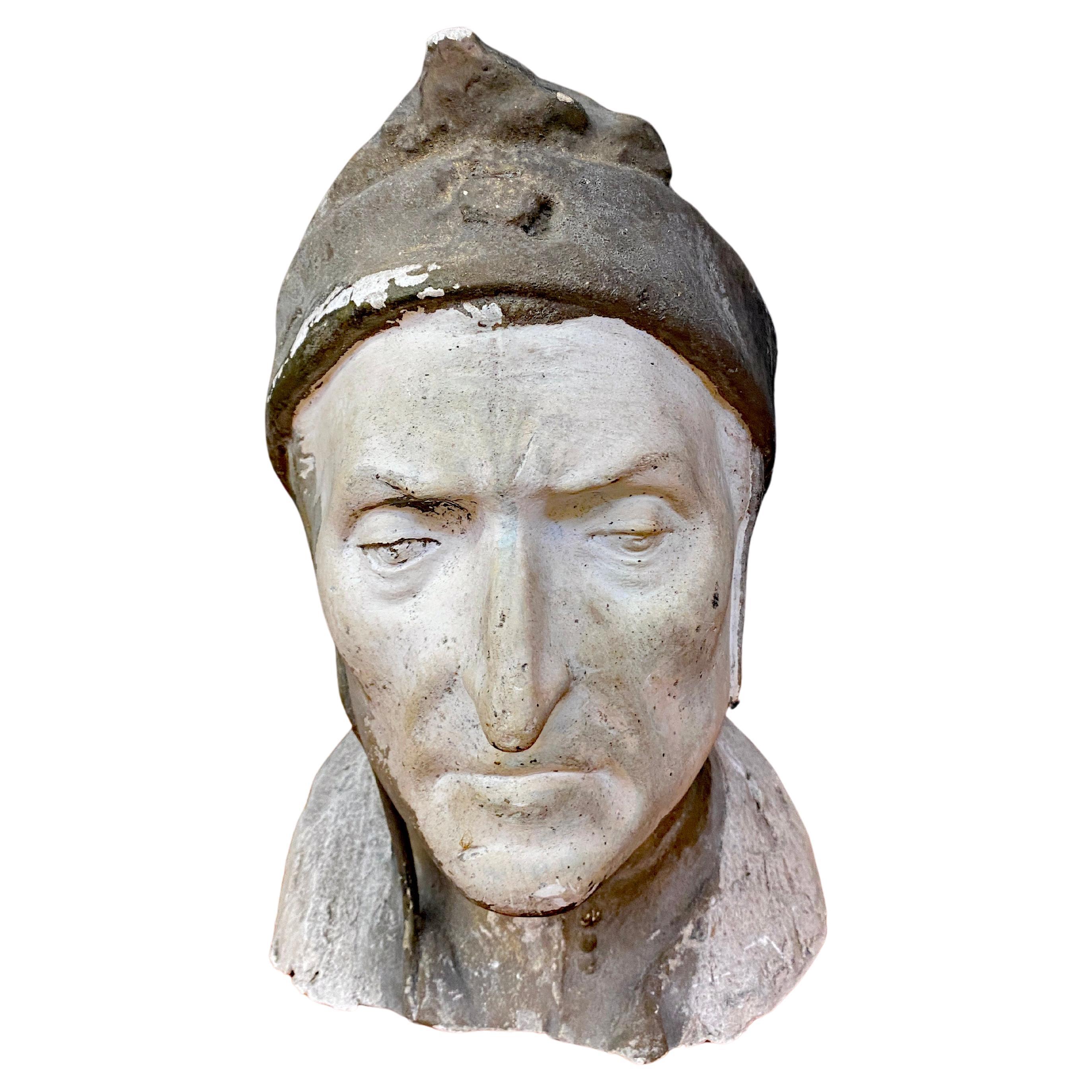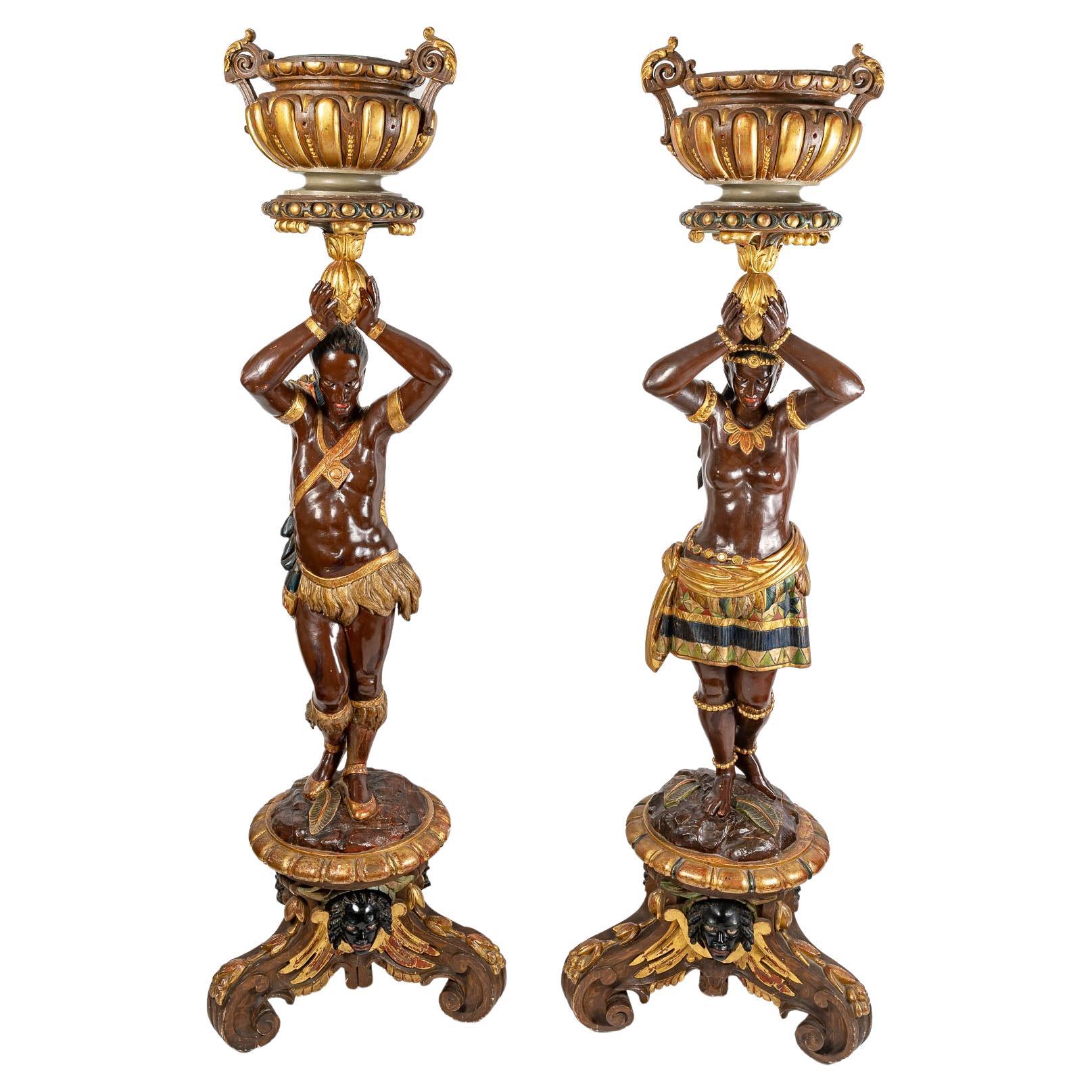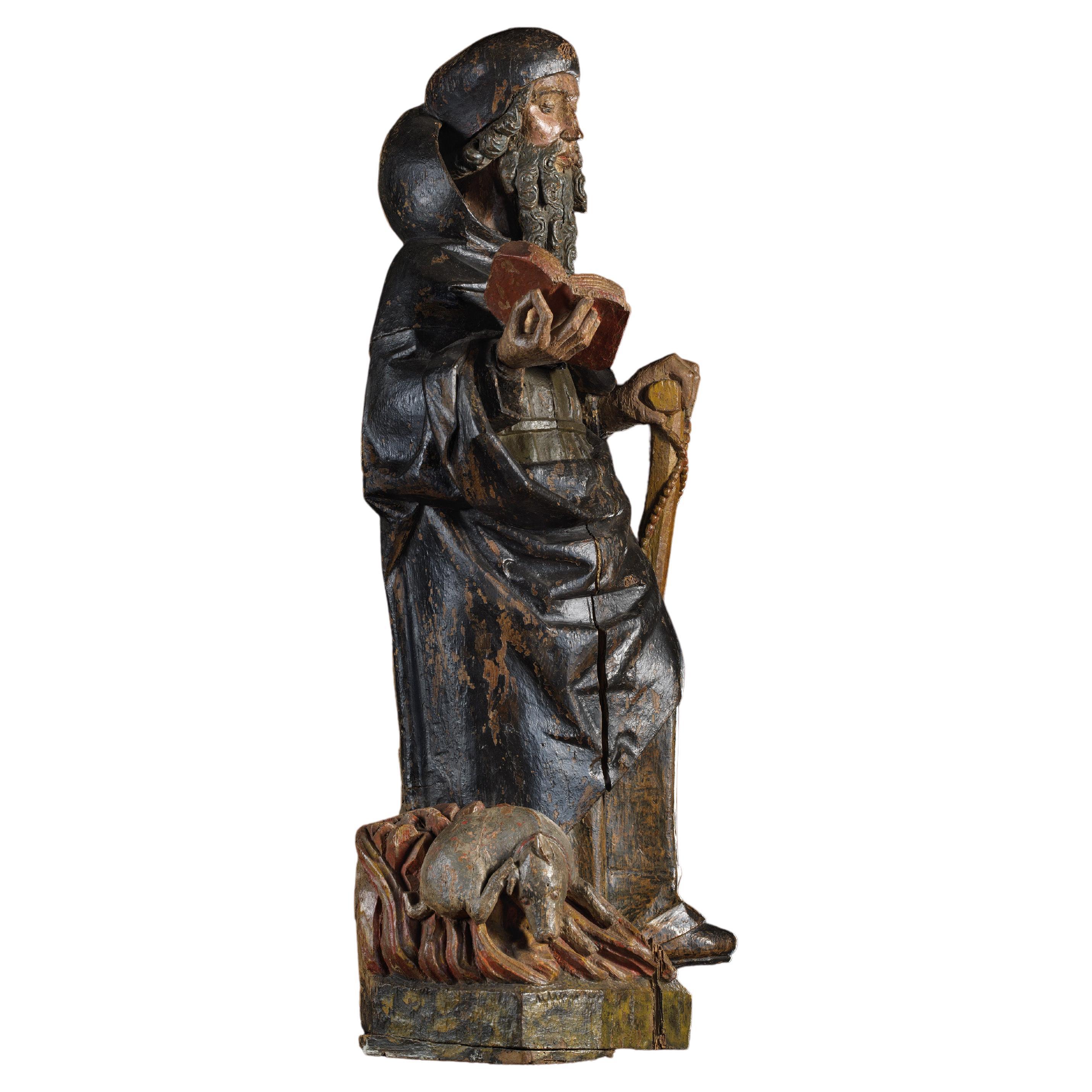Items Similar to Sculpture in Regula Representing a Poulbot, Circa 1900-1920.
Want more images or videos?
Request additional images or videos from the seller
1 of 10
Sculpture in Regula Representing a Poulbot, Circa 1900-1920.
About the Item
Sculpture in regula representing a Poulbot, circa 1900-1920.
A regule sculpture of a Poulbot, a newspaper seller, circa 1900-1920, Napoleon III style.
h: 53cm, w: 23cm, d: 23cm
- Dimensions:Height: 20.87 in (53 cm)Width: 9.06 in (23 cm)Depth: 9.06 in (23 cm)
- Style:Napoleon III (Of the Period)
- Materials and Techniques:
- Place of Origin:
- Period:
- Date of Manufacture:circa 1900-1920
- Condition:Wear consistent with age and use.
- Seller Location:Saint-Ouen, FR
- Reference Number:1stDibs: LU1530239368742
About the Seller
4.8
Platinum Seller
These expertly vetted sellers are 1stDibs' most experienced sellers and are rated highest by our customers.
Established in 2003
1stDibs seller since 2015
280 sales on 1stDibs
Typical response time: 2 hours
- ShippingRetrieving quote...Ships From: Saint-Ouen, France
- Return PolicyA return for this item may be initiated within 3 days of delivery.
More From This SellerView All
- Sculpture in Patinated Bronze, Animal Statue Representing a Pheasant, 1920-1930.Located in Saint-Ouen, FRSculpture in Patinated Bronze, Animal Statue representing a Pheasant, 1920-1930. Patinated bronze sculpture on marble base, 1920-1930, representing a pheasant, Napoleon III style. H...Category
20th Century French Napoleon III Animal Sculptures
MaterialsMarble, Bronze
- Pair of Sculptures Representing American Indians Forming a PlanterLocated in Saint-Ouen, FR"Pair of sculptures representing American Indians forming a planter" Planters, pair of sculptures, Venetian work of the XIXth century or beginning of the XXth century representing...Category
Antique 19th Century Italian Napoleon III Figurative Sculptures
MaterialsWood
- Sculpture Representing a Woman Sitting on a Rock by Léon PiletBy Leon PiletLocated in Saint-Ouen, FRSculpture Representing a woman sitting on a rock by Léon Pilet Important bronze sculpture by Léon Pilet, XIXth century, Napoleon III period, representing a woman sitting on a rock...Category
Antique 19th Century French Napoleon III Figurative Sculptures
MaterialsBronze
- Gilded Bronze Sculpture with Patina Representing a Panda, 20th Century.Located in Saint-Ouen, FRGilded bronze sculpture with patina representing a Panda, 20th century. A gilt bronze and patina sculpture, marble base, of a seated Panda, 20th century. h: 21cm, w: 8cm, d: 9cmCategory
20th Century French Art Deco Animal Sculptures
MaterialsBronze
- Bronze Plate with Patina Representing Fauns, Signed ClodionBy Claude Michel ClodionLocated in Saint-Ouen, FR"Bronze plate with patina representing Fauns, signed Clodion" Beautiful Bronze Plaque Representing Fauns, Signed Clodion, 19th century, Napoleon III period Measures: H: 28cm, W: ...Category
Antique 19th Century French Napoleon III Figurative Sculptures
MaterialsBronze
- Terracotta Sculpture, 19th Century, Circa 1880.Located in Saint-Ouen, FRTerracotta sculpture, 19th century, circa 1880. 19th century terracotta bust, Napoleon III period. Dimensions: h: 66cm, w: 78cm, d: 32cmCategory
Antique 19th Century French Napoleon III Busts
MaterialsTerracotta
You May Also Like
- toriginal plaster head representing EL DANTE, circa 1900Located in Saint-Ouen, FRoriginal plaster head representing EL DANTE, circa 1900Category
Early 20th Century European Classical Roman Figurative Sculptures
MaterialsPlaster
- Sculpture in Murano glass with gold representing a fish circa 1950Located in Rio De Janeiro, RJIncredible sculpture in Murano glass with gold representing a fish circa 1950.Category
Vintage 1950s Italian International Style Animal Sculptures
MaterialsMurano Glass
- Art Nouveau french bronze representing naked young lady circa 1900Located in Rio De Janeiro, RJIncredible bronze Art Nouveau representing young lady naked circa 1900Category
Antique Early 1900s French Art Nouveau Figurative Sculptures
MaterialsBronze
- Sculpture in Polychrome Wood Representing Saint Anthony HermitLocated in Saint-Ouen, FRSculpture In Polychrome Wood Representing Saint Anthony Hermit Origin : East of France Period : End of the 15th century Measures: Height : 97 cm Width : 32 cm Depth : 26 cm Polychrome wood The saint is represented by an old, bearded man, dressed in a hooded monk’s habit over the tunic of his religious order. He is stood upright, holding an open book, La Règle des Antonnites, in his right hand. In the other hand, he is holding a staff in the form of the Greek letter tau with a rosary hanging down over it. At his feet lies a pig wearing a small bell around its neck. He rests on his right leg, whilst the left advances forward as if he were about to start walking. His belted tunic, forming several rectilinear pleats, is covered by a habit which is open only at the waist, therefore revealing these pleats. He is also wearing a hooded scapular over his shoulders. His thick hair escapes from under a distinctive hat, forming a collection of finely sculpted ringlets. This fine detail is also applied to the four long ringlets of his superb beard, which sit just below the shorter ones of his moustache. His face is a picture of harmony, with lowered eyes and his small mouth lost amongst the abundance of hair. At his feet on a pedestal of flames, hinting to the fire of Saint Anthony no doubt, a pig trying to scratch its ear. Born in 251 in Upper Egypt, he withdrew into solitude at a very young age. He would have been plagued in the desert with extremely diabolical temptations. He payed a visit to Saint Paul the hermit towards the end of his life. He was the dean of the Thébaïde anchorites, who was miraculously fed by a crow. On the day that Saint Anthony visited, the crow brought two portions of bread in its beak instead of one. Some time after, having learnt of the death of his venerable brother, Saint Anthony went to bury him with the help of two lions. The King of Catalonia pleaded to come and exorcise his posessed wife and children. He left Thébaïde for Barcelona. He appeared at the house of the provost André, bringing him a sow in his mouth, a monstrous piglet born without eyes. André wanted to kill it but Anthony stopped him, telling him that the poor beast wanted to ask for healing, as the King had done for his offspring. He made a sign of the cross on the piglet and it suddenly acquired its sight and the members which it did not have at birth. After which, André, guided by Saint Anthony, exorcised the Queen of Catalonia in the same way whilst she knelt at his feet. Théophile discovered the body of Saint Anthony wrapped in a palm fibre tunic which he had been given by Saint Paul the Hermit. In the Red Sea Desert there are two Coptic, IV century, monasteries which stand next to each other, one dedicated to Saint Anthony, the other to Saint Paul the Hermit. They are the oldest monasteries in the Christian world. The body of the famous hermit was transported to Constantinople and would have been transferred into the abbaye, Saint Antoine-en-Viennois, Dauphine. The Antonnite Order was a charitable order which specialised in treating contagious diseases. The fire of Saint Anthony, was identified by doctors as a grangrenous ergotism, caused by a diet of rye bread contaminated with the parasite ergot. The effect of this is the drying out of hands and feet which then need amputation, the plague and then later syphilis. All the skin diseases came from Saint Anthony. Saint Anthony’s pilgrimage to Dauphine rivaled that of Saint Jacques to Compostela. Thanks to the various commanderies created by the mother house, Saint Anthony’s cult spread throughout Christianity. In order to maintain commanderies and their hospitals, the Antonnites resorted to pig farming. They enjoyed having the benefit of letting their pigs roam freely through the streets of the villages, with little bells round their necks that had a recognisable chime so that they were able to find them. This privilege was very envied by other monastic Orders. Saint Anthony was the patron saint of several crafts such as basket makers and gravediggers. However it is to the pig that he owes the majority of his patronages; pigkeepers, pig sellers, butchers, porc butchers, brush makers who use pig bristle and bell-ringers because of the pig bells...Category
Antique 15th Century and Earlier Figurative Sculptures
MaterialsWood
- Important Sculpture Representing Saint BarbaraLocated in Saint-Ouen, FRIMPORTANT WOOD SCULPTURE REPRESENTING SAINT BARBARA ORIGIN : NORTHERN FRANCE OR FLANDERS PERIOD : 16th CENTURY Height: 103 cm Length: 40 cm Depth: 30 cm Oak wood Good condition Saint Barbara was the daughter of Dioscorus who imprisonned her in a tower to prevent her from being corrupted by Christianity. Despite this, she was taught and baptisted by a local priest. According to legend, she proved her faith by carving a third window into the tower, symbolic of the Trinity. Once her father learned this, he threatened her with his sword. She managed to escape and hide, not before being revealed by a sheperd. She was thrown in jail and tortured, refusing to denounce her faith. Her father forced her up to the mountain’s summit and decapitated her, afterwhich God struck him down by lightning. Saint Barbara`s following was popularized in the Occident in the 13th century because of the Golden Legend...Category
Antique 16th Century Figurative Sculptures
MaterialsOak
- Bronze Sculpture Representing a Kneeling WomanLocated in Montreal, QCBronze sculpture representing a kneeling woman melted in Montreal by foundry "Fonderie d'Art Vandevoorde".Category
Vintage 1970s Canadian Sculptures
MaterialsBronze





